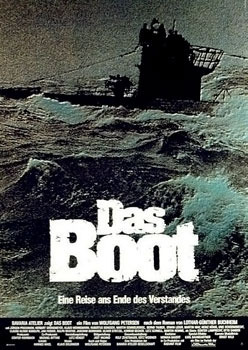What Max Boot missed: A response about the future shape of the U.S. military

By Billy Birdzell
Best Defense guest respondent
I believe Max
has missed Das Boot.
1. If COIN is 80 percent political, then the political
construct is most important. French and British in Algeria and Malaya were
conquerors with political and military control over the place for 124 years
(ironic) before their insurgencies began. Please talk about expeditionary COIN.
Russia in Afghanistan, U.S. Afghanistan, U.S. Vietnam, U.S. Iraq. Where else? The
United States in the Philippines 1898-1913 was the Malaya example because we
owned the place. Mixing up political contexts = fail.
2. No matter how good our tactics, cultural training,
language ability, etc., we will never get out of the dilemma that the harder we
try, the worse it gets. More money for AID and development = more corruption. More
troops = accidental guerrillas and al Qaeda in Iraq type organizations. Joe Meyers
and UBL call it defensive jihad, but whatever. Our very presence delegitimizes
the government we are trying to prop up. It's a failed model and one that
Galula said was the worst of all possible worlds. FM 3-24 is a manual for the
worst case scenario -- that in which the military gets stuck with an
insurgency that it didn't see coming. It can, at best, direct military
force to get a slightly better political situation than running away. It is not
a doctrine around which to structure the military.
3. I disagree that language, culture, etc. materially impact
success. Using the military instead of the State Department for diplomacy is
inherently flawed. The military's main contribution is destroying armed groups
who challenge the government's monopoly on force and I'd like to see what
percentage of intelligence was developed by native speakers/culture experts.
4. Tanks are fabulous for killing guerrillas in urban areas.
Artillery is your friend and outbound rounds still make the sound of freedom. Flying
machines are cool. Max fundamentally does not understand that COIN involves
high intensity combat and our technology/firepower, USED APPROPRIATELY, gives
us an edge.
5. I agree with Nagl that advisors a la Landsdale during Huk
(20 PAX, later increased to 56), El Sal (55 PAX), JSOTF-P, and Columbia
are great. However, like all other uses of military force, what is the
strategy? What is the United States trying to achieve? What are we going to
give up to do more/longer/better engagements with which partner nation forces? We
can have the best advisors in the world, if the partner nations do not have
real governments and a military with the will to fight, we're pissing in the
wind.
6. The most important factors for success against irregulars
-- partner nation governance and the local military's will -- are out of our
hands. Those two issues are not discussed by people who want to rearrange the
military and create all kinds of nonsense. If eliminating safe havens and
supporting stable governments is our policy, then what kind of military
deployments maximize the host nation's ability to create legitimacy and find
their will to win? I argue that Max's
concepts minimize them.
Billy Birdzell
served eight years in the Marine Corps, was a platoon commander during OIF I
and II and a team leader in
MARSOC
. He
is now
doing that Security Studies thing at Georgetown University.
Thomas E. Ricks's Blog
- Thomas E. Ricks's profile
- 436 followers



